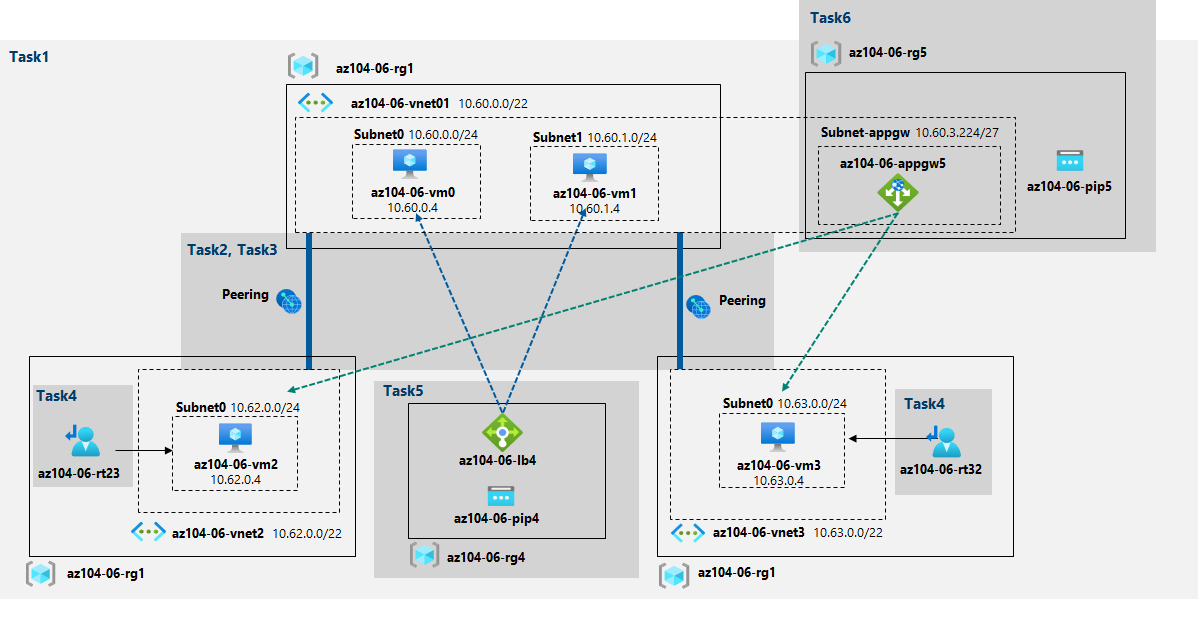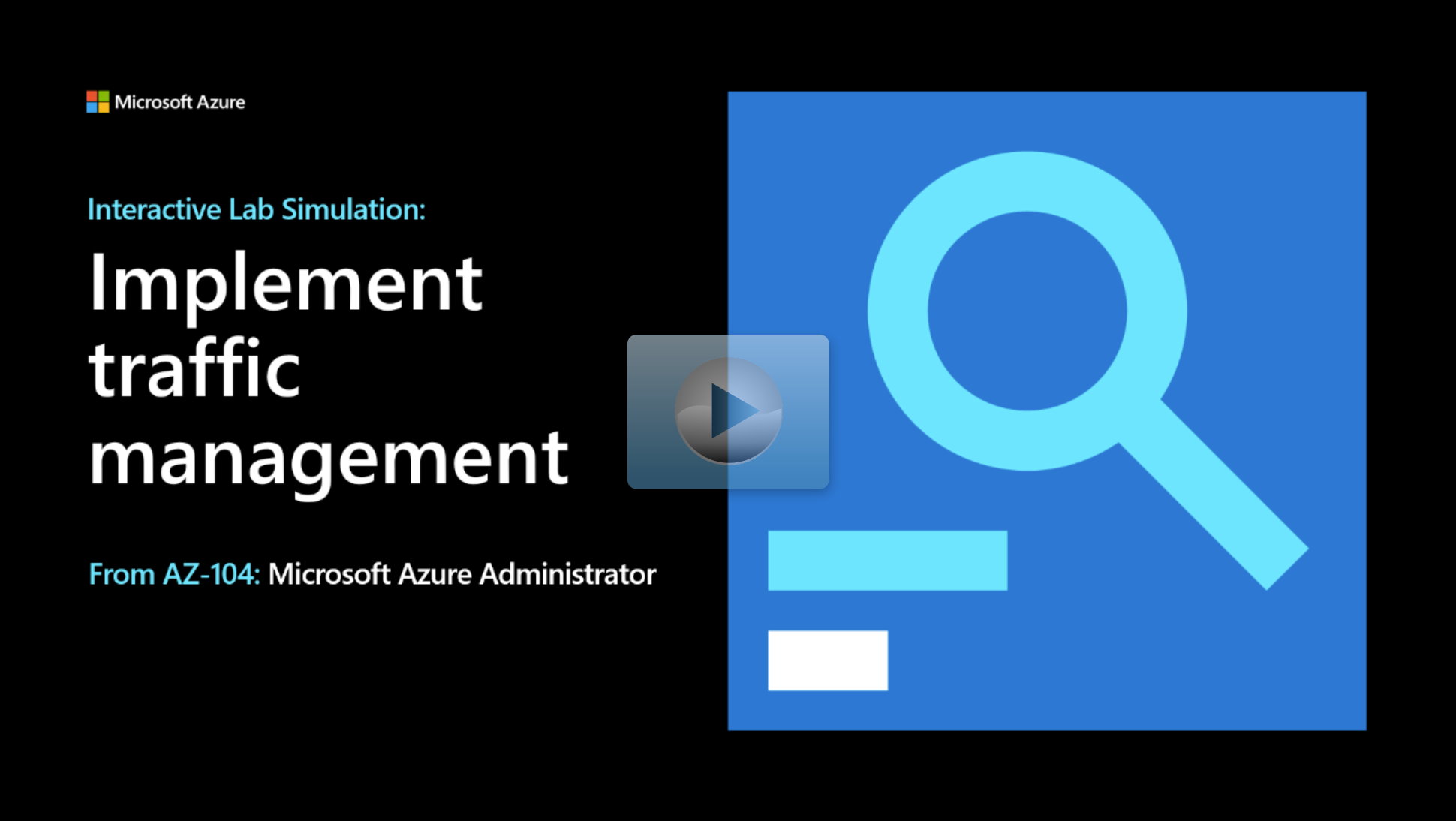Interactive lab simulation
Lab scenario
Your organization is migrating hub and spoke network topologies to Azure. As the Azure Administrator you need to:
- Replicate the on-premises functionality in Azure.
- Configure virtual network peering and traffic routing.
- Implement load balancer and application gateway functionality.
- Test to ensure traffic management is flowing as intended.
Architecture diagram

Objectives
- Task 1: Provision the lab environment. In this task, you deploy four virtual machines into the same Azure region. The first two reside in a hub virtual network, while the remaining two reside in a separate spoke virtual network.
- Review an Azure Resource Manager template.
- This template includes the virtual machines and virtual networks in the underlying architecture.
- Use Azure PowerShell to install the Network Watcher extension on the Azure virtual machines.
- Task 2: Configure the hub and spoke network topology. In this task, you configure local peering between the virtual networks you deployed in the previous tasks in order to create a hub and spoke network topology.
- Configure virtual network peering between the virtual networks.
- Ensure forwarded traffic is allowed to facilitate routing between spoke virtual networks.
- Task 3: Test transitivity of virtual network peering. In this task, you test transitivity of virtual network peering by using Network Watcher.
- Use Network Watcher to verify peered networks are reachable.
- Use Network Watcher to verify unpeered networks are unreachable.
- Task 4: Configure routing in the hub and spoke topology. In this task, you configure and test routing between the two spoke virtual networks.
- Enable IP forwarding on a virtual machine.
- Install the remote access Windows feature with associated tools.
- Create routing tables and associate them with the appropriate subnets.
- Use Network Watcher to verify traffic routed through the virtual machine.
- Task 5: Implement Azure Load Balancer. In this task, you implement an Azure load balancer in front of the two Azure virtual machines in the hub virtual network.
- Create a load balancer with a public IP address.
- Create a back-end pool that includes the virtual machines.
- Add a load balancing rule to alternate between virtual machines in the back-end pool.
- Test to confirm that the load balancer is working correctly.
- Task 6: Implement Azure Application Gateway. In this task, you implement an Azure application gateway in front of the two Azure virtual machines in the spoke virtual networks.
- Create a dedicated subnet for the application gateway.
- Create an application gateway with a public IP address.
- Configure the application gateway back-end pool to include the virtual machines.
- Test to ensure traffic is balanced across the back-end virtual machines.
Note
Select the thumbnail image to start the lab simulation. When you're done, be sure to return to this page so you can continue learning.
